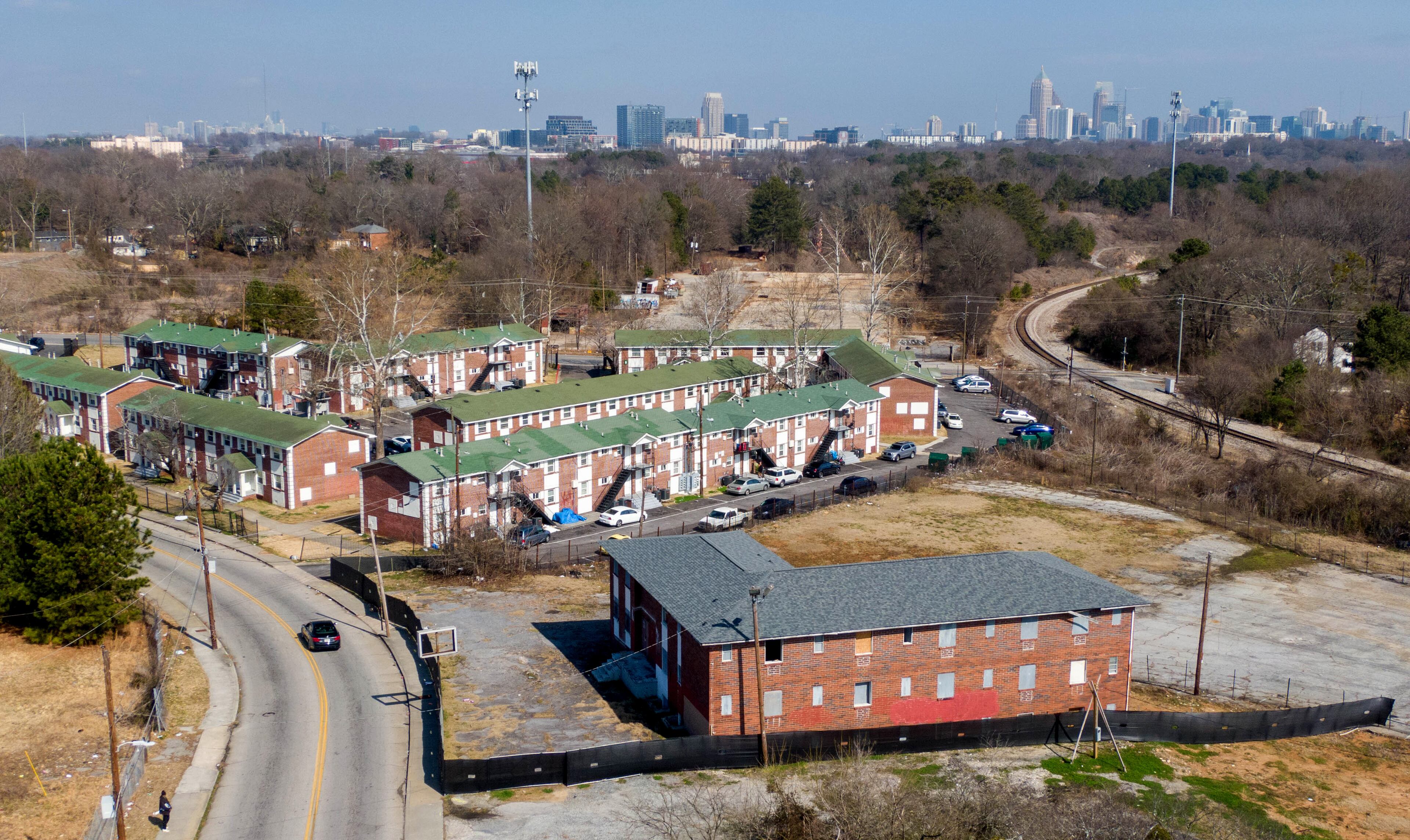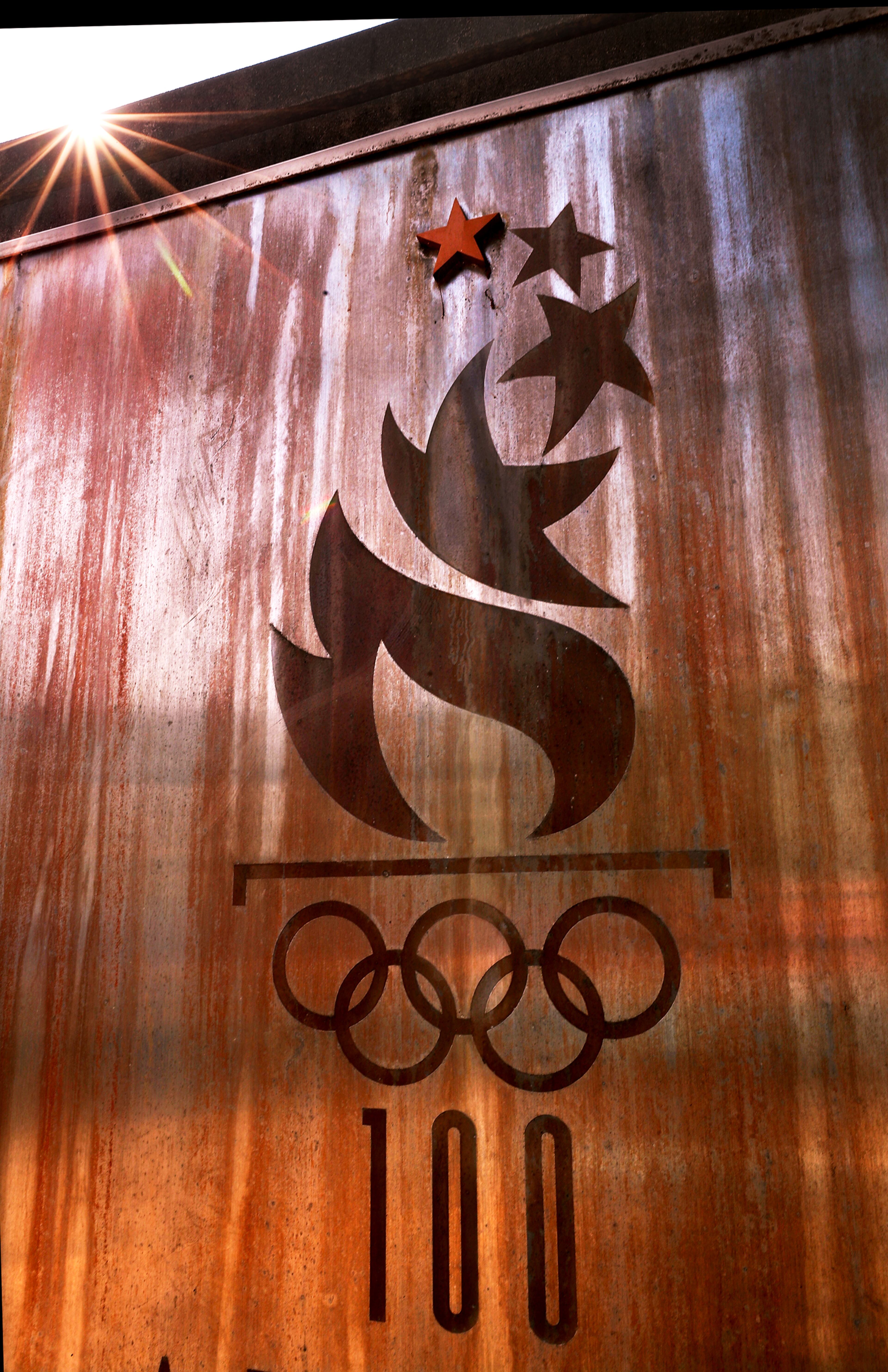1996 Olympics energized Atlanta, but uneven legacy lives on

Not long after the city won its dark horse bid to host the 1996 Olympic Games, then-Mayor Maynard H. Jackson laid out a lofty goal to scale what he called “the twin peaks of Atlanta’s Mount Olympus.”
Civic leaders, he said, would not only host a memorable 17-day fête for the world to see, but “simultaneously uplift the people of Atlanta and fight poverty in the process.”
Twenty-five years after Atlanta’s Olympic cauldron was extinguished, and as the curtains are drawn on the Tokyo Games, the debate here over the economic legacy of the 1996 event is still very much alive.

Many economists, business developers and ex-officials look back at the Centennial Olympic Games as a turning point. The Olympiad, they say, sparked major international investment, the revitalization of some of the city’s most neglected corners — especially downtown — and industries like hospitality that are today major engines of growth.
“It was the biggest economic development tool Georgia and Atlanta have ever had,” said Sam Williams, who led the Metro Atlanta Chamber of Commerce from 1996 until 2013.
But some neighborhood activists and professionals focused on equity view things another way. To them, the Olympics represent a squandered once-in-a-lifetime opportunity to lift up lower-income, majority-minority neighborhoods. Some residents were displaced and much-needed affordable housing deferred.
“There was no intention of really investing to make sure that Black poor folks could remain in these communities after the Olympics left,” said Alison Johnson, a fair housing activist who grew up not far from the Olympic Stadium in Peoplestown. “We were shuffled around and given the bare minimum.”

Today, 18 Fortune 500 companies call Georgia home, with only three U.S. cities having more than metro Atlanta. Average home prices in intown Atlanta top $600,000, including five neighborhoods above $1 million, according to Adams Realtors.
At the same time, nearly 21% of the city of Atlanta’s population was living in poverty in 2019, twice the national rate, according to the Census Bureau. Various studies in recent years also found Atlanta to have the highest wealth and income disparities among major U.S. cities.
Rapid makeovers
To understand just how much the 1996 Games reshaped the city of Atlanta, start downtown on Centennial Olympic Park Drive.
Drive by on a summer afternoon and the street is quiet. Mature Crepe Myrtle trees shade the sidewalks. Two girls with a puppy stroll past a tidy club house, playground and row of four-story brick townhomes.

The scene was very different three decades ago at what was then called Techwood Homes.
Opened in the mid-1930s as the nation’s first public housing project, the squat brick complex had been hit hard by crime, the crack epidemic and decades of neglect. In 1991, an Atlanta Journal-Constitution reporter described neighborhood children playing in a dirt patch inlayed with beer caps, glass shards and cigarette butts.

Things weren’t too different a few blocks south. Three decades ago, the area northeast of CNN Center was a tangle of rundown industrial buildings, vacant lots and homeless shelters.
Now Centennial Olympic Park is at the thriving heart of Atlanta’s tourist district. Families bop between the Ferris wheel, aquarium and National Center for Human Rights on a 21-acre greenspace still as camera-ready as it was in 1996. Nearly $3.4 billion in development projects have been planned or completed in the area since then, according to Central Atlanta Progress.

Another stretch that saw major changes sits on the other side of the Downtown Connector.
When officials began eyeing the southside for an 85,000-seat Olympic Stadium, they saw a community that already had experience hosting a major sports venue. Atlanta-Fulton County Stadium, then the home of the Atlanta Braves, had towered over Summerhill, Mechanicsville and Peoplestown for nearly three decades. But the area had seen few economic benefits trickle its way: Many residents were still living at or below the poverty line, homes were rundown and retail too often limited to gas stations, liquor stores and laundromats.
To address the concerns of wary residents, organizers agreed to demolish Atlanta-Fulton County Stadium and later slim down the Olympic venue before the Braves moved in.

But few other changes occurred until recent years with the development of the Beltline and the growing reach of gentrification. New condos and Instagram-ready retail have arrived in Summerhill, including a bakery selling $7 fruit galettes, but many of the minimarts of yesteryear remain.
Building momentum
As city officials prepared for the ‘96 Games, they worried how the world would view this striving, adolescent city from their television sets. Leaders didn’t want the international media arriving at their hotels and finding some of the most heartbreaking images of poverty within walking distance.
So they went to work beautifying the city’s most unattractive corners: painting some, razing and rehabbing others.

Officials emptied out Techwood and demolished dilapidated homes in Peoplestown and Summerhill, replacing some within sight of the sports arenas.
The Corporation for Olympic Development in Atlanta, the nonprofit created by Jackson to help reach his twin Mount Olympus goals, spent some $76 million repairing sidewalks, planting trees, building parklets and installing street lamps in the most foot-trafficked corridors.
“Part of what we were doing was creating connectivity, assuring a sense of safety and announcing the identity of the city,” said Clara Axam, CODA’s former president, in a recent interview.

Citywide, agencies from MARTA to the airport sped up their timelines for construction and improvement projects. Ditto for hotel, motel and restaurant owners, who updated and expanded their facilities in advance of the Games.
Taken together, those capital improvements are the Olympics’ most enduring economic legacy, said Jeffrey Humphreys, director of the University of Georgia’s Selig Center for Economic Growth.
“That extra capacity allowed Atlanta to attract many more large events than it probably otherwise would not have attracted,” he said.
Critics saw the changes as whitewashing impoverished communities. Boosters argue that they made it easier to sell Atlanta to a new generation of investors and corporations given VIP treatment during the Games.

In 1990, as the city was bidding, metro Atlanta had about 50,000 hotel rooms, estimates Harvey Newman, a Georgia State University professor. By 1996, that number had grown 20%, and had doubled by the end of the decade. The Olympics took the hospitality industry, including hosting conferences, and “put it on steroids,” he said.
Williams, the former metro chamber head, estimates that the event helped the city lure “at least 25″ foreign governments who opened consulates, trading posts and other honorary offices in Atlanta.
David Marvin, a real estate developer whose company, Legacy Ventures, helped transform downtown, said Atlanta’s Olympic halo helped him attract Chinese partners for eight different projects.
“Chinese businesspeople investing in the U.S. was not common in the late ‘90s into the early ‘00s,” he said. “But the particular group that we worked with had an affinity for sport and the Olympics, so that was sort of the honey that piqued their interest.”

Promises kept?
The city of Atlanta’s population also began to turn around in the 1990s after years of decline, while the broader metro area continued its rise as one of the fastest growing in the country.
Demographers warn it’s hard to tease out how many people moved here because of the Games, but other trends are hard to ignore. Mike Carnathan, a director of the Atlanta Regional Commission’s research and analytics group, points to the more than tripling of the metro area’s foreign-born population, from 113,000 people in 1990 to almost 402,000 in 2000. Such a rapid increase has not been matched in the decades before or since.
But plenty of people were also displaced by the Games.
ACOG tore down houses and apartment buildings near Atlanta-Fulton County Stadium so land could be paved for parking lots. Olympic officials paid for new homes and moving expenses for residents, many of whom were highly skeptical of the city’s intentions. Still fresh in their minds was the forced removal of neighbors as the highway system was built three decades earlier.

“A lot of promises made but none of them kept,” said Columbus Ward, a longtime activist who helped lead an unsuccessful neighborhood push to block construction of Olympic Stadium in Summerhill.
Jackson had initially planned to spend about $300 million for community development across 15 intown neighborhoods, but the city quickly scaled back those plans. Many southside residents had been hoping Olympic programs would help them buy their homes and invest in local, minority-owned businesses.
An even bigger transformation happened downtown.
Plans to house Olympic athletes at Techwood fell through, but most of the original complex, along with the neighboring Clark-Howell housing project, was eventually razed. That included more than 1,000 affordable units that housed some 780 families.

In the buildings’ stead emerged the $42 million Centennial Place, a mixed-income community that was among the first of its kind. Of 734 units, 301 have been set aside as affordable housing, in which residents pay no more than 30% of their adjusted monthly income for rent and utilities, according to the Atlanta Housing Authority. The rest go to tenants paying market rate, which today starts at $1,440 per month for one-bedrooms.
By the time Centennial Place opened in late 1996, more than four in five of Techwood’s original residents had left the complex, according to Georgia Tech’s Larry Keating, an urban planner. He said many “just got worn out” with the years-long development process and found housing elsewhere. Others couldn’t meet the job and credit requirements for a new subsidized unit.
By October 1997, 213 former Techwood families applied to live in their old community but only 37 had qualified and moved in, according to an AJC story from the time. An official from Centennial Place’s parent company said at the time that the development wasn’t designed to be a housing project but an upscale community that accepts some low-income residents.

Today, affordable housing advocates warn there isn’t nearly enough supply for the city’s lowest income residents. Fewer and fewer landlords are willing to accept housing vouchers, especially if they can earn market rate for the same units, and developers quickly snap up vacant lots to flip for a profit.
Atlanta Mayor Keisha Lance Bottoms made affordable housing a centerpiece of her 2017 campaign, but the pandemic sidelined many of her sweeping plans. Earlier this year, the city approved borrowing up to $100 million in bonds to invest in affordable housing.
These days, Atlanta stands out for its wealth and income disparities. Studies published in 2018 by the Brookings Institution and Bloomberg found Atlanta to have the worst economic equality among major U.S. cities. The city’s racial wealth gap also is extreme, with median income of white households about three times that of Black households, according to the Atlanta Wealth Building Initiative.

Looking back, many ex-officials involved in the city’s pre- and post-Olympics work say they could have done more to help low-income residents had they had more money.
“Nobody thought that we had the resources to do what needed to be done,” said Mike Dobbins, who managed the city’s Olympic legacy as commissioner of planning, development and neighborhood conservation beginning in the mid-1990s.
But Dobbins, who recently co-authored a book about the legacy of the ‘96 Games, maintains more good was done than harm.
“I’ve worked in a lot of different places, and I’ve never known anything to happen so completely and so transformatively than what happened in those three years” before the Games, said Dobbins.


